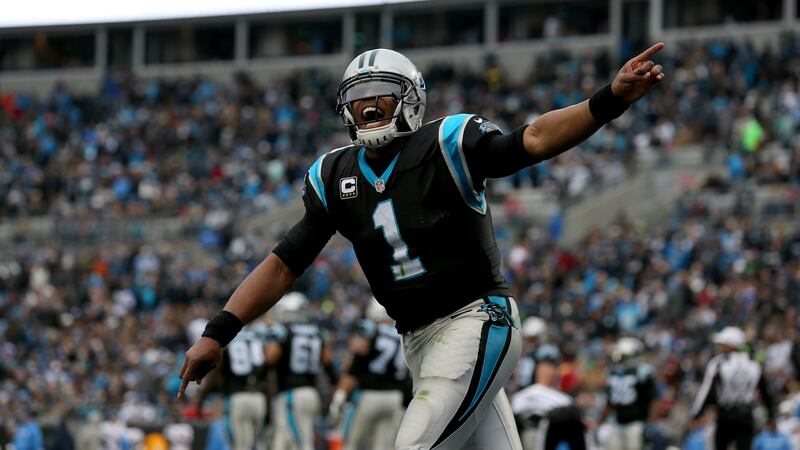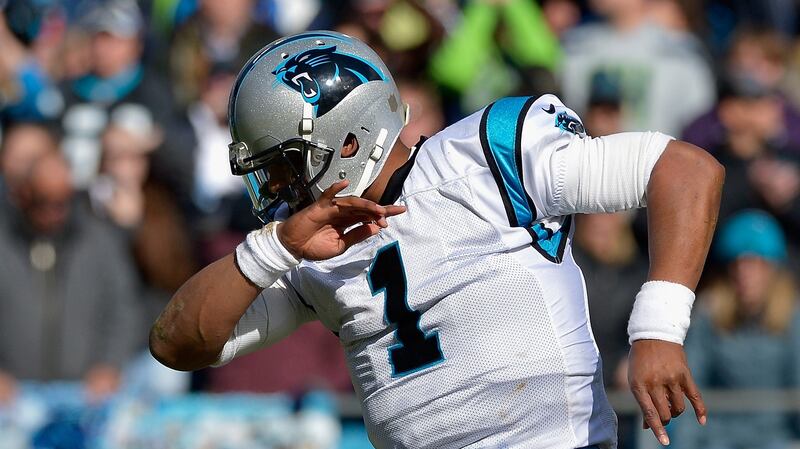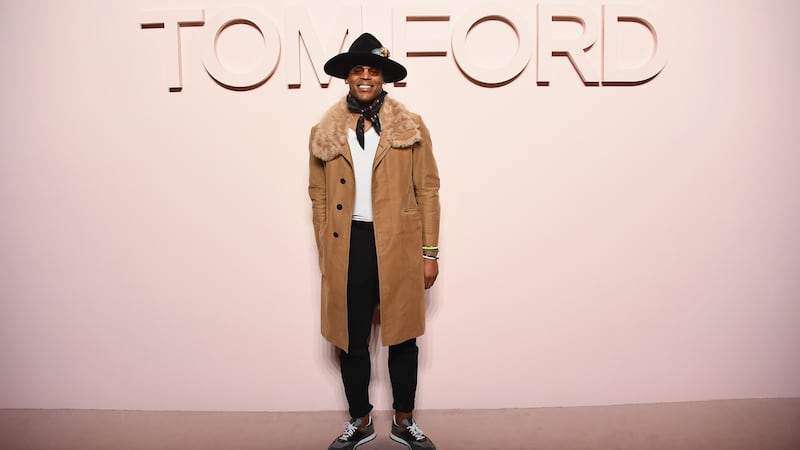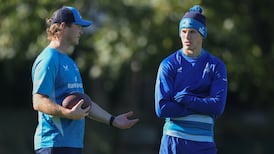Third-and-10 is traditionally a passing situation, but just outside the red zone on that down, Cam Newton took the shotgun snap, glanced left, tucked the ball and charged forward. Evading a thicket of bodies, he cut right and accelerated toward the sideline.
Even then, five years into Newton’s career, defenders seemed confounded that someone that big — 6-foot-5 and 245 pounds — could also be that fast. He outraced one defender, then shoved another, jolting him five yards with a hellacious stiff arm, to gain the first down.
Jumping up, Newton spiked the ball and flexed. On the next play, after shedding a tackle, he raced 12 yards into the end zone, somersaulting over his center, for the second of his four touchdowns in the Carolina Panthers’ NFC championship game rout of the Arizona Cardinals in January 2016. He did his ‘Superman’ celebration and then dabbed, performing the head-to-bent-elbow dance move as the home crowd at Bank of America Stadium roared.
In that dominant season of dominant victories and dominant displays — he would, two weeks later, be selected as the NFL’s most valuable player — Newton’s personality and performance catapulted him into a niche of celebrity culture, as the rare football superstar with crossover appeal. “I see myself not only as a football player, but an entertainer and icon,” he said before he was drafted in 2011. He had, unabashedly, done just that.
In a league where teams pay millions of dollars for even average quarterback play, what has happened to Newton this off-season would have seemed incomprehensible in 2015. With a new coach and after gutting the roster, the Panthers released Newton in March, having decided that he no longer fit into their plans.

His career since that MVP season has been marred by injury and postseason disappointment. In his absence from the limelight, the NFL has churned on, and a cadre of thrilling young quarterbacks have reached full bloom. But it was Newton who helped create the paradigm for the stars currently holding the league rapt; Lamar Jackson, Patrick Mahomes and Deshaun Watson don't have to fight their organisations or commentators to boldly play the way they do, in part because Newton already did.
Superman
Newton spent three months unemployed as the coronavirus pandemic prevented teams from gauging his health before the New England Patriots signed him to a one-year contract reportedly laden with performance incentives. In less than a month, Newton, 31, who is two years removed from his last healthy season, will arrive at Patriots training camp seeking to answer for himself the same question wondered by a vast legion of football fans: Can he be Superman again?
When Carolina drafted Newton No 1 over all in 2011, he vaulted the franchise from two-win irrelevance the season before into the national consciousness.
In his debut, he passed for 422 yards and accounted for three touchdowns. The next week, he threw for 432 and rushed for 53 more. The Panthers lost both, but it almost did not matter. They had Newton, and no one else did.
He primped. He preened. He moped. He pointed after first downs. He barreled into defenders. He ran and threw for lots of yards and scored lots of touchdowns and had lots of fun, charming some fans and irritating others with his demonstrative personality. Categorised as a mobile quarterback or a dual threat — descriptions, rooted in racial stereotypes, suggesting he doesn’t throw as well as he runs — Newton abhorred labels. He played the position how he wanted to, how he knew he could.
“Cam was like, ‘I’m bringing my full self here,’” said Louis Moore, the author of “We Will Win the Day: The Civil Rights Movement, the Black Athlete and the Quest for Equality” and an associate professor of history at Grand Valley State University.
“It opened up everything for others to follow — the way he dressed, the way he talked, the way he moved,” Moore said. “We hadn’t really seen any of that. The quarterback’s always been told that he has to act a certain way, this kind of professional level — you can’t be a diva wide receiver — and Cam flipped the script: ‘No, I’m going to be who I want to be.’ And plus, he was really, really good.”
The nation noticed. Already Newton had secured what was reportedly the largest shoe-and-apparel deal ever for an NFL rookie, as Under Armour outbid Nike for his endorsement. Soon, the spoils of his ascent included being featured on the cover of GQ and in spreads for magazines, like Glamour, Vanity Fair and Vogue, which ranked him the most attractive player in the league.
“When he walks into a room, man, it’s just, ‘Oh, my God,’” said Chris McClain, a longtime radio host in Charlotte, NC, who, he joked, has a PhD in Cam-o-logy. “He has a presence, and he likes that. He’s always said that ‘I’m not going to be your typical quarterback — I’m going to be me.’”
Ostentatious
That attitude was manifested in Newton’s postgame style — his ostentatious hats and garish suits have furrowed brows — as much as in his on-field fearlessness, his willingness to initiate contact and jeopardise his body, even as coaches urged him to slide.
Considering all that Newton could do on the field, he seemed at times burdened with offsetting Carolina’s roster imperfections, from its modest offensive line to its meager cast of receivers. The Panthers won three consecutive NFC South titles, culminating with that 2015 season that ended with a loss to Denver in Super Bowl 50.
“I don’t think, at times, we maybe surrounded him with the best players,” said the former quarterback Derek Anderson, who backed up Newton for seven seasons. “But we could get away with it because of his ability.”
As a runner, Newton was nonpareil, perhaps the best short-yardage and red-zone threat the NFL has ever seen. But as electrifying as he was as a passer, his inconsistencies trailed him even during his best seasons. That is, until 2018, when he flourished under the new offensive coordinator Norv Turner’s short-passing game. That season, he leapt into the rare air of the game’s tacticians, finishing with a 67.9 per cent completion rate, ninth among starters.

Just as he was thriving, though, another set of shoulder troubles surfaced. After having surgery for a torn rotator cuff after the 2016 season, Newton underwent another procedure on the same shoulder in January 2019, eight months after the new owner David Tepper bought the team. Mended by training camp that year, he then injured the Lisfranc ligament in his left foot during a preseason game, an injury that impeded both his mobility and his follow-through.
In what turned out to be his final game with Carolina, a Week 2 home defeat to Tampa Bay, Newton completed 49 percent of his passes, and in decisive proof of his limitations, he didn’t run the ball on either of the Panthers’ fourth-and-1 situations in the fourth quarter.
Newton's free agency this spring followed his peers', as Tom Brady, Philip Rivers and Teddy Bridgewater, who landed with Carolina, all signed contracts that could pay them over $20 million per year. Newton became available on March 24th — when travel restrictions wrought by the pandemic blocked teams from examining him — and lingered on the open market past April's draft, as viable starting options evaporated.
Whether the depressed demand was an absurdity, given his stature, or entirely reasonable, given the general uncertainty about his health, was not clear. If not for the pandemic, one NFL agent said, the market for Newton would have been robust.
“But you have to pay a player for what they’re going to be in the NFL, not for what they’ve done,” said the agent, who requested anonymity to speak freely about a player he does not represent. “And you don’t know what he’s going to do.”
Transcendent
Richard Sherman, a San Francisco 49ers cornerback, publicly questioned Newton's one-year signing in a quarterback-driven league. "How many former League MVPs have had to sign for the min? (Asking for a friend.) just ridiculous," Sherman wrote in a post on Twitter. "A transcendent talent and less talented QBs are getting 15/16m a year. Disgusting."
The retired quarterback Michael Vick said Newton’s situation reminded him of his own. Once the highest-paid player in the league and a cover star for the Madden NFL video-game series, Vick signed with the Philadelphia Eagles for less than $2 million, with no guaranteed money, in 2009 after having served 21 months in federal prison for his role in a dogfighting ring.
“Obviously, when you’ve been a starter for a long tenure for one team, you can feel out of place when something like this happens to you,” Vick said. “I felt like I should have been starting for a team, based on my résumé and what I’d been able to do until that point, but that just wasn’t the reality. You’re not going to be viewed that way if you have a two-year hiatus or you’re hampered by injuries.”

The agent posited that Newton, with a strong season, could attract a deal similar to the $100 million contract that Vick, then 31, got from the Eagles before the 2011 season — a contract that Vick, now an analyst for Fox, called personally validating.
Newton has not had to prove himself to such an extent since 2009, when he attended Blinn College to regain NCAA eligibility after flaming out at Florida. He arrived at the campus in Brenham, Texas, without a car or a starting role but parlayed that stopover into an enchanted season at Auburn, where he won the Heisman Trophy and the national championship.
New England, in many respects, offers a similar springboard for Newton, who will play the marquee position for the most successful NFL franchise of the past 25 years. It is a chance to reclaim his primacy and visibility while also making a social statement of sorts, as a high-profile Black quarterback alighting in Boston, a city that has a reputation for being inhospitable to Black people.
Playing behind the best offensive line of his career, Newton will benefit from the tutelage of the coordinator Josh McDaniels, who, by marrying Newton’s running acumen with his play-action passing prowess, can finally stress defenses in a way that the Patriots’ primary challengers in the AFC — Kansas City, Baltimore, Houston — have done to them.
Newton is already building a rapport with receiver Mohamed Sanu, with whom he worked out last week in Los Angeles. Watching them train, Drew Lieberman, Sanu's private receiving coach, was struck not only by Newton's fluid mechanics and movements — "Not a single thing made me think he was ever hurt," Lieberman said — but also by his messaging. Sounding a familiar trope, Newton expressed how fueled he is by those who doubt him.
On Instagram, where Newton keeps a carefully produced account of his workouts captioned with signature flair in a dingbat font, he recently posted, “This is not about money for me; it’s about respect.”
If he is healthy, if he plays well in New England, the respect will come. And, perhaps, so much more, from marketing opportunities to touchdown celebrations to postseason berths.
For Newton, on the precipice of his second act, discarded and bypassed and overlooked, there is but one direction for him to go: up, up and away.
Alain Delaqueriere contributed research. - NYT













